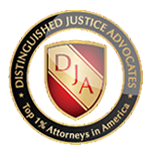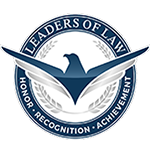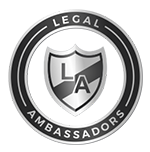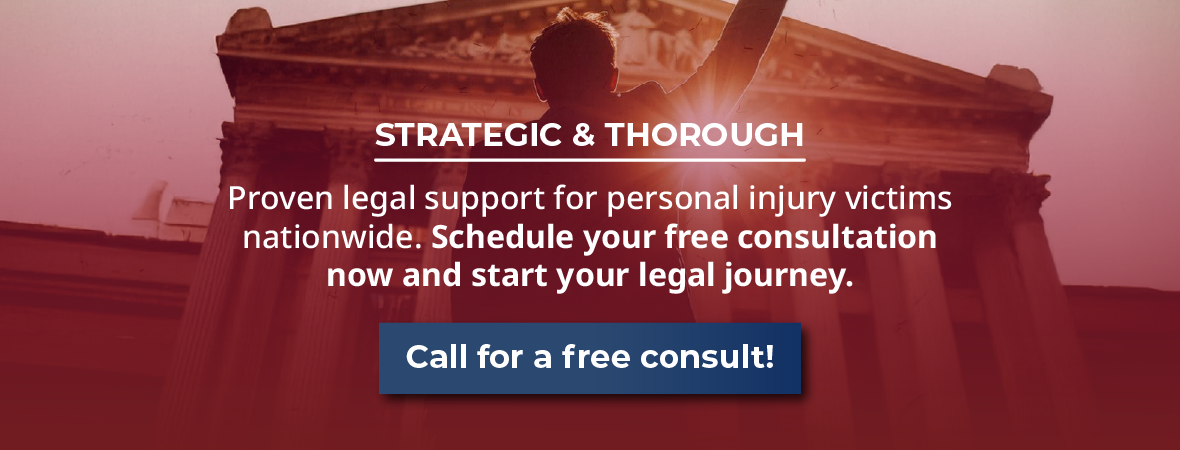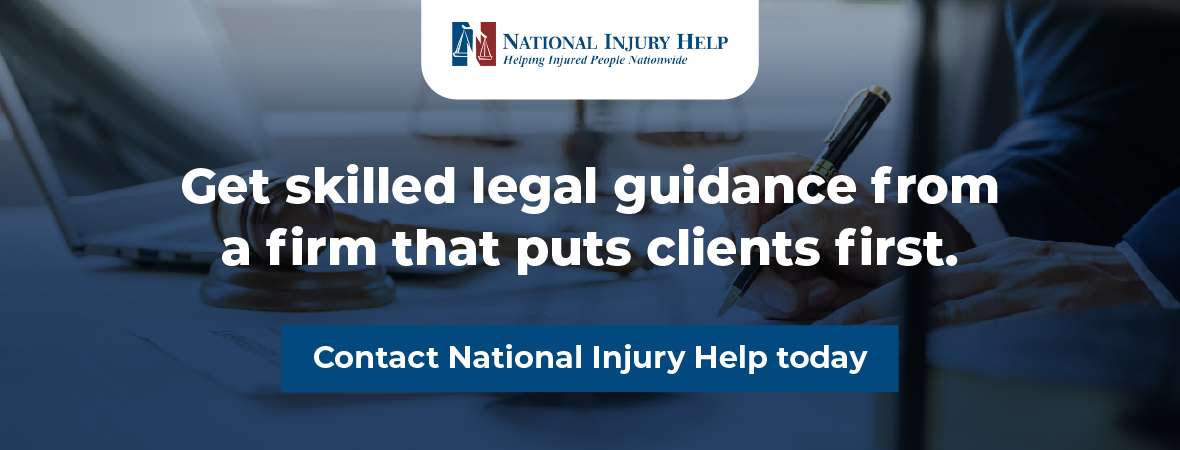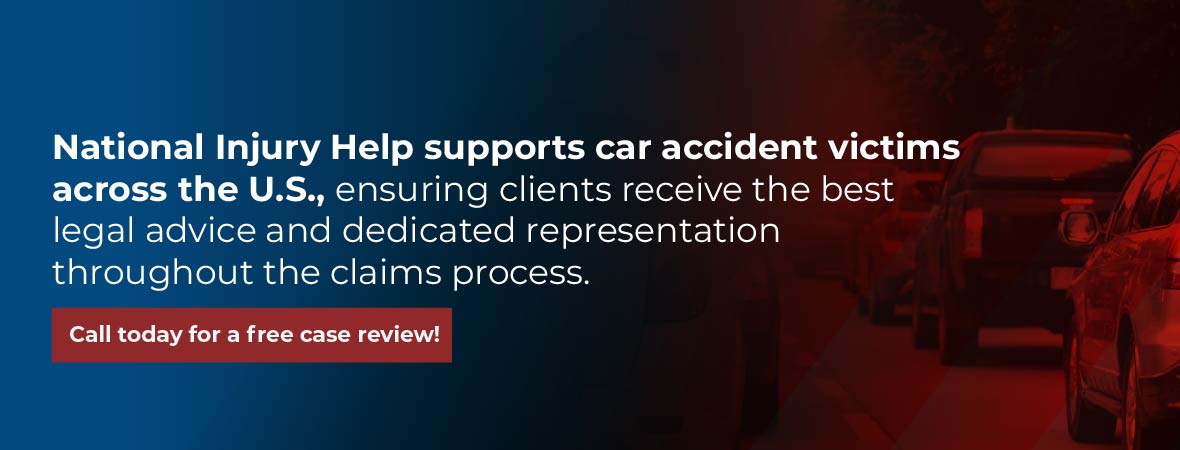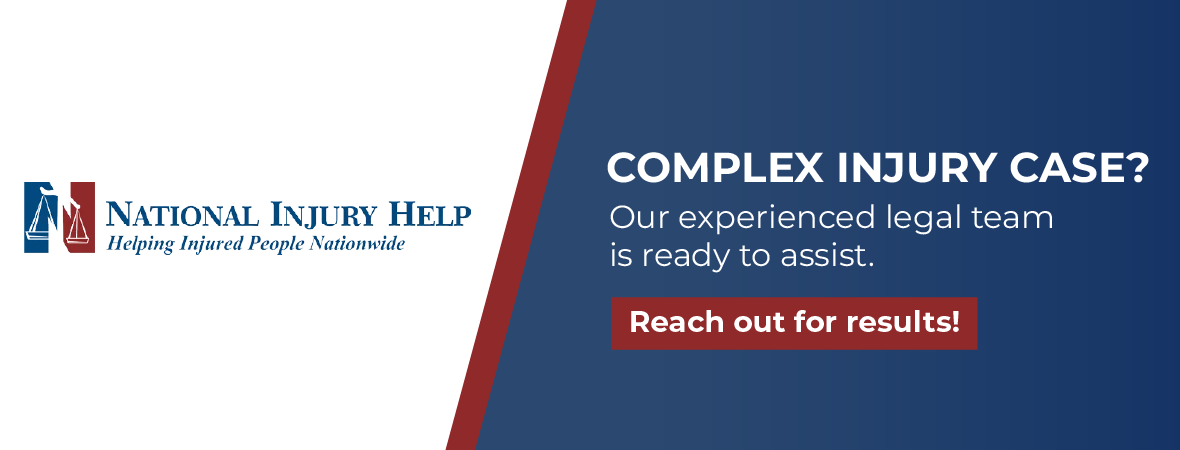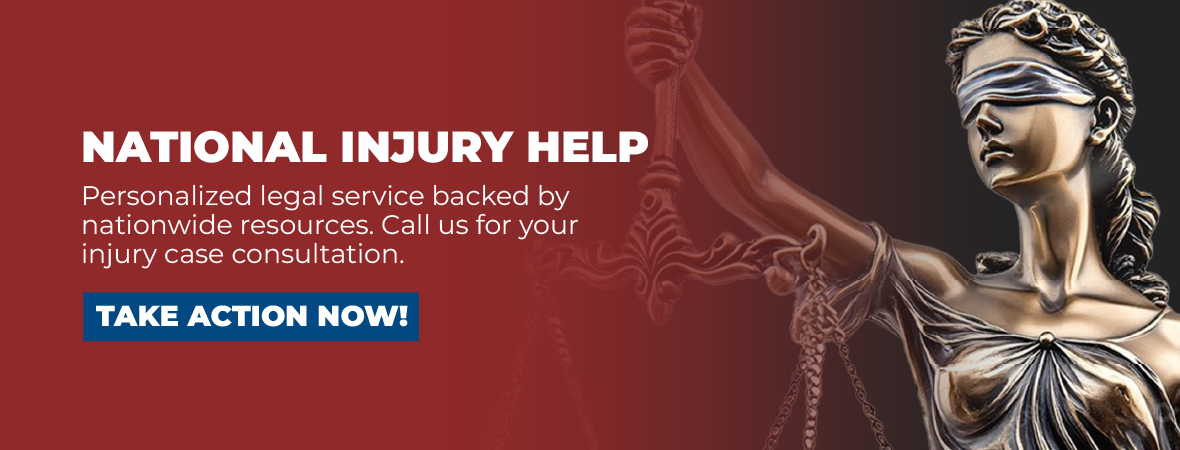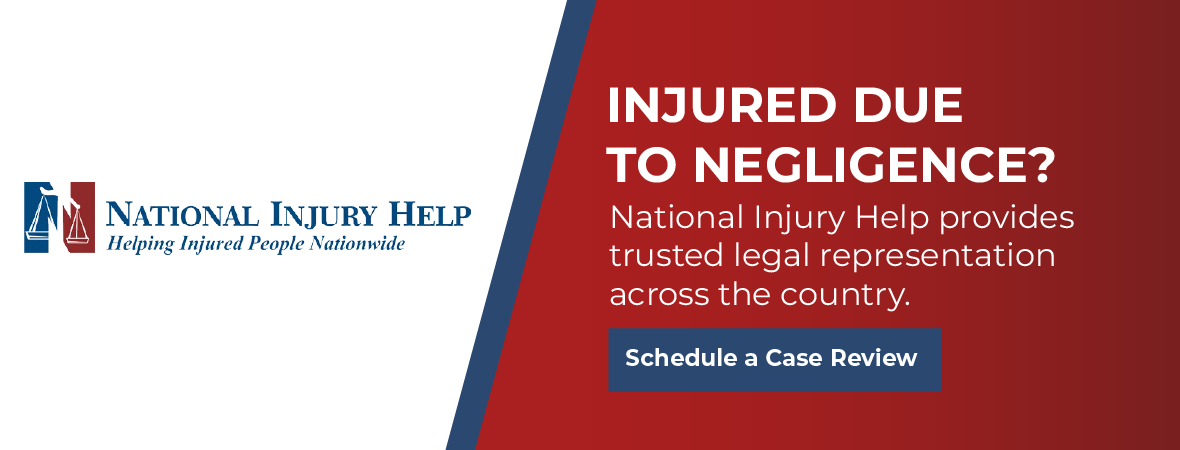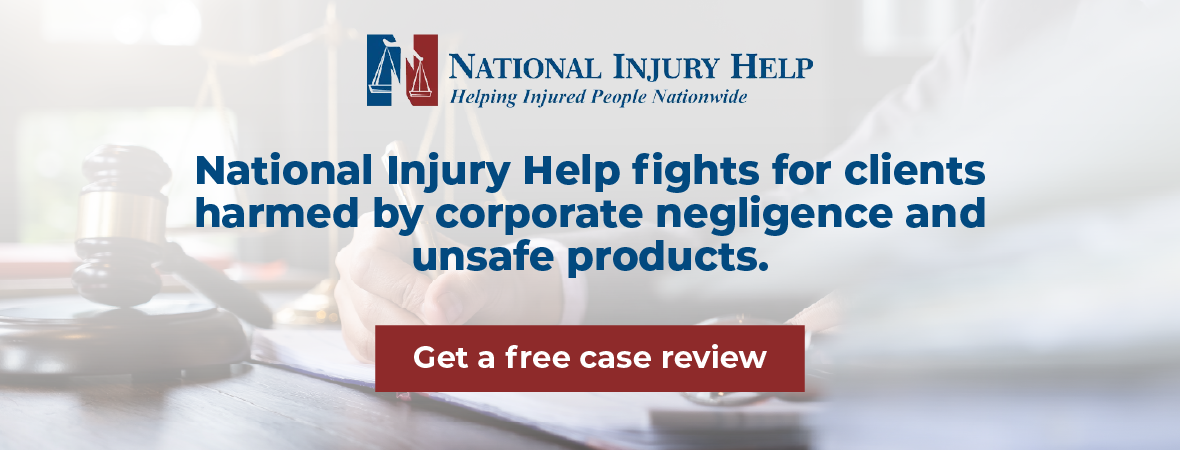After a car accident, you may be dealing with injuries, bills, and insurance stress. If you’ve been hurt in a crash, contact National Injury Help by calling 1 (800) 214-1010 today. We are ready to fight for the justice and support you deserve.
Across the United States, millions of drivers commute on highways, backroads, and busy city streets each day. From packed interstates to quiet neighborhood corners, car accidents are a daily reality. While some are minor fender-benders, others lead to life-changing injuries, overwhelming medical bills, and financial stress.
When you’re hurt in a collision, the days that follow can feel like chaos. You’re dealing with pain, a damaged car, hospital visits, and phone calls from insurance adjusters. In the middle of all this, you may be unsure of what to do or who to trust.
That’s where hiring a car accident lawyer can make all the difference. An experienced attorney can help you understand your rights, fight for full and fair car crash compensation, and deal with the insurance company so you can focus on healing.
Common Causes of Car Accidents in the U.S.
Understanding how car accidents happen is one of the first steps toward preventing them. It also helps explain why lawyers pay close attention to certain details when investigating a crash.
Every accident has a story, and knowing the common causes helps victims protect their rights and understand what went wrong. Below, we explore the most frequent reasons accidents happen across the United States and why each one matters in a personal injury claim.
Distracted Driving
Distracted driving is one of the most common causes of car accidents today. With smartphones, in-car screens, and modern technology all within reach, it is easier than ever to lose focus behind the wheel. But even low-tech distractions, like eating, changing the radio station, or turning to talk to a passenger, can be just as dangerous.
One of the biggest risks comes from texting or using apps while driving. Reading or sending a message takes a driver’s eyes off the road for several seconds. At highway speeds, this can mean driving the length of a football field without looking ahead.
In that short time, road conditions can change quickly. A car could stop suddenly, a pedestrian could step out, or a light could turn red. These are moments when every second counts, and distractions make it easy to miss the warning signs.
Many distracted driving accidents involve rear-end collisions, sideswipes, or crashes at intersections. These types of crashes often happen because the distracted driver simply wasn’t paying attention until it was too late. Drivers who take their eyes off the road are not only putting themselves in danger, but also everyone around them.
Speeding and Aggressive Driving
Speeding is another major cause of serious accidents. When a driver travels faster than the posted limit or faster than is safe for the current road conditions, they give themselves less time to react to sudden changes.
The faster a car is moving, the longer it takes to stop. This means that if traffic slows ahead or a vehicle pulls out unexpectedly, the speeding driver may not be able to avoid a crash in time.
In addition to speeding, aggressive driving is a growing concern, especially in heavy traffic. This can include tailgating, cutting people off, weaving through lanes without signaling, and slamming on brakes to send a message to another driver.
These behaviors often lead to road rage or reckless driving, which raises the chance of a serious collision.
Drivers who speed or act aggressively are not just breaking traffic laws. They are also increasing the force of impact in a crash, which leads to more serious injuries and higher repair costs. High-speed accidents often cause vehicles to flip, crush, or catch fire, leaving little room for survival.
Drunk or Impaired Driving
Driving under the influence of alcohol or drugs remains a leading cause of fatal accidents in the United States. Even though there are strict laws and years of public education campaigns, impaired drivers still take to the roads every day.
Alcohol and drugs slow down reaction time, cloud judgment, and make it harder for drivers to process information or make quick decisions.
A drunk driver may not notice a red light, a stop sign, or a car slowing ahead. In many cases, they fail to brake at all before the crash. This can turn what might have been a minor fender bender into a deadly collision.
Driving while high on marijuana, opioids, or prescription medications can be just as dangerous. Many people assume they are still able to drive because they feel “okay,” but their motor skills and alertness are often reduced in ways they do not realize.
Drunk or impaired driving accidents are especially heartbreaking because they are entirely preventable. These are not just accidents. They are choices that result in injuries, destroyed lives, and lasting trauma for everyone involved.
Reckless Driving and Road Rage
Sometimes, drivers let their emotions get the better of them. Road rage and reckless driving often go hand in hand. This can involve running red lights, refusing to yield, speeding through school zones, or cutting across lanes without looking.
In many cases, reckless drivers act out of frustration. Maybe someone was driving too slow in front of them, or they felt someone cut them off. In response, they speed up, tailgate, or block other drivers. These actions put everyone at risk. When someone is driving out of anger rather than reason, they are not focused on safety. Instead, they are trying to “win” on the road, which never ends well.
Unlike distracted or impaired driving, which can happen without much warning, reckless driving is often aggressive from the start. Witnesses may report erratic behavior, swerving, and near-misses before the actual crash happens. These details are important when building a legal case.
Dangerous Road Conditions
Not every accident is the driver’s fault. Sometimes, road conditions play a major role. Potholes, faded lane markings, missing traffic signs, and poor lighting can all contribute to serious crashes. So can construction zones that lack clear instructions or barriers.
The weather is another factor. Rain, snow, ice, fog, and even strong winds can reduce visibility and make roads slippery. While drivers are expected to adjust their speed and driving style to the weather, some accidents are caused in part by road design or maintenance failures.
When a road is not properly maintained or when a city or state fails to fix known hazards, a government agency may be partly responsible for the accident. These cases are more complex but important to pursue when the conditions clearly contributed to the crash.
What to Do After a Car Accident
Getting into a car accident is one of the most stressful experiences a person can go through. In the moment, it’s easy to feel overwhelmed or unsure about what to do next. But the steps you take immediately after a crash can have a big impact on your health, your finances, and any future legal claim. Whether the crash is minor or serious, following the right process can help protect you physically and legally.
Here’s a step-by-step guide on what to do after a car accident to keep yourself safe, gather important information, and prepare for what comes next.
Step 1: Check for Injuries and Call 911
The very first thing you should do is check yourself and others for injuries. If you or anyone else is hurt, even slightly, call 911 right away. Emergency services can dispatch police officers, paramedics, and fire rescue if needed. Don’t try to move someone who is seriously injured unless they’re in immediate danger, such as from a fire.
Even if you feel okay at first, adrenaline can mask pain and symptoms. That’s why it’s smart to get checked out by paramedics on the scene. They’re trained to spot signs of injury that you might not notice on your own. If paramedics recommend going to the hospital, listen to them. Your health should always come first.
It’s also important to report the accident to law enforcement. In many states, you are legally required to call the police for any crash that results in injury, death, or significant property damage. The police will create an official accident report, which can be very helpful later when dealing with insurance companies or legal claims.
Step 2: Move to Safety
If your vehicle is in a dangerous location, such as the middle of the road or near a blind curve, and it’s still drivable, move it to a safe spot.
Pull over to the shoulder or into a nearby parking lot if possible. Turn on your hazard lights to make your vehicle more visible to other drivers. This helps prevent further accidents and keeps everyone safer while you wait for help to arrive.
If your car cannot be moved, stay inside with your seatbelt fastened until emergency responders arrive, unless it is unsafe to remain in the vehicle.
Step 3: Exchange Information
Once everyone is safe, exchange information with the other driver or drivers involved in the crash. Make sure to get the following details:
- Full name and contact number
- Driver’s license number
- License plate number
- Insurance company name and policy number
Stay calm and respectful during this exchange. Don’t admit fault or make statements about who caused the accident, even if you think you might be to blame. Just stick to collecting the facts.
Also, if there are any witnesses nearby, pedestrians, passengers, or other drivers, try to get their names and phone numbers. Independent witnesses can be extremely valuable if there are disagreements later about what happened.
Step 4: Document the Scene
Use your phone to take as many photos and videos of the accident scene as possible. These images can become powerful evidence in both insurance claims and legal cases. Make sure to capture:
- Damage to all vehicles involved, from different angles
- Skid marks, broken glass, or debris on the road
- Road conditions, such as wet pavement or potholes
- Position of the cars after the crash
- Traffic signals, signs, or anything that might have played a role
- Any visible injuries to yourself or others
If you can, write down your own notes while the events are fresh in your memory. Include details such as the time of day, weather conditions, what you were doing just before the crash, and anything unusual that you noticed about the other driver (like erratic behavior or the smell of alcohol).
Even small details can make a big difference when it’s time to prove what really happened.
Step 5: Seek Medical Attention
Many people feel okay right after a crash and assume they don’t need medical care. But this can be a mistake. Not all injuries are obvious right away. Conditions like whiplash, concussions, internal bleeding, or soft tissue injuries may not cause symptoms until hours or even days later.
That’s why it’s important to see a doctor as soon as possible, even if you think you’re fine. Getting medical attention right after the accident does two important things. First, it helps make sure that any injuries are identified and treated quickly. Second, it creates a medical record that links your injuries directly to the accident. This is very important if you decide to file an insurance claim or personal injury lawsuit later.
Make sure to follow any medical advice you receive and attend all follow-up appointments. Keeping detailed records of your treatment, symptoms, medications, and how the injury affects your daily life will help support your case down the line.
Step 6: Notify Your Insurance Company
Once you’ve taken care of your immediate needs, contact your insurance company to report the accident. Most policies require you to notify them promptly. Stick to the facts and avoid giving recorded statements until you’ve had a chance to talk with a lawyer, especially if the accident involved injuries or serious damage.
You’ll likely be asked for a description of the crash, the other driver’s details, and any photos or witness information you collected. Be honest but careful. Let the insurer know you are still gathering information, and do not guess if you don’t know the answer to a question.
Step 7: Speak With a Lawyer If Injuries Are Involved
If your accident involved injuries, a totaled vehicle, or a dispute about who was at fault, it’s a good idea to talk to a personal injury lawyer. An experienced attorney can help you understand your rights, deal with the insurance company, and pursue compensation if you were hurt.
Most personal injury law firms offer free consultations and work on a contingency fee basis, which means you only pay if they win your case. Getting legal advice early on can protect you from common mistakes and help you build a stronger case.
When to Contact a Car Accident Lawyer
After a car accident, it’s common to feel shaken, confused, and unsure about your next steps. Some accidents are simple and can be handled directly through insurance, especially if the damage is minor and no one is seriously hurt.
But not all crashes are that straightforward. In many situations, it’s in your best interest to speak with a car accident lawyer, someone who understands the legal system, knows how to deal with insurance companies, and can help you get the compensation you truly deserve.
Knowing when to get legal help can make the difference between a smooth recovery and a financial nightmare. Let’s walk through the kinds of situations where hiring a lawyer is not just helpful, but necessary.
When You Suffered Serious Injuries
If you’ve been seriously injured in a crash, getting legal advice should be one of your top priorities. Injuries like broken bones, head trauma, back or neck damage, internal bleeding, or anything that requires surgery or long-term treatment are red flags that your case is more complex.
Medical bills can add up fast, especially if you’re taken to the emergency room, admitted to the hospital, or require months of physical therapy. On top of that, your injury might prevent you from working, taking care of your family, or enjoying your normal routine. When the stakes are high, you need someone who can calculate not just what you’ve already lost but what you’ll continue to lose in the future.
A lawyer will gather your medical records, consult with doctors if needed, and work with experts to estimate how the injury will affect you financially and emotionally over time. This full picture is critical when negotiating with insurance companies or presenting your case in court.
When the Other Driver Denies Responsibility
Sometimes the fault is clear. For example, if a car ran a red light or rear-ended you at a stop sign, the blame might be obvious. But in many cases, the story is not so simple. The other driver might deny responsibility or even accuse you of causing the crash.
This is especially common when there are no witnesses or when the accident happened in a way that could be interpreted in different ways. When a fault is disputed, insurance companies may try to use that as an excuse to reduce your payout or deny your claim altogether.
A car accident lawyer can help gather evidence to prove what really happened. That might include reviewing police reports, collecting video footage, interviewing witnesses, and even bringing in accident reconstruction experts. Without a lawyer’s help, you may find yourself stuck in a battle of “he said, she said,” which rarely works out in your favor.
When Multiple Vehicles Were Involved
Accidents that involve more than two vehicles can quickly become legally complicated. With three or more drivers in the mix, figuring out who is responsible and how much blame each person shares can be difficult.
In these cases, there may be multiple insurance companies involved, and they may try to shift blame onto one another to avoid paying out claims. This often leads to delays, confusion, and finger-pointing.
Having a lawyer on your side helps you stay focused. An attorney will track down all parties involved, make sure your side of the story is heard, and help you avoid being unfairly blamed for someone else’s mistake. They will also make sure that every possible source of compensation is explored so you don’t leave money on the table.
When an Insurance Company Makes a Low Offer or Pressures You for a Statement
Insurance companies often act like they’re on your side, but their main goal is to protect their own bottom line. That means they will sometimes offer you far less than your claim is worth, especially if they know you’re injured, overwhelmed, or unfamiliar with the process.
One common tactic is to call soon after the crash and offer a quick settlement. This can be tempting, especially if you’re dealing with medical bills or lost wages. But once you accept a settlement, you give up your right to ask for more, even if your injuries turn out to be worse than you thought.
Another tactic is to request a recorded statement. What you say during that call can later be used against you, even if you were just trying to be polite or honest. Something as simple as saying “I’m feeling okay” could be twisted to suggest you weren’t really hurt.
If you get a lowball offer or feel pressured to give a statement, that’s a clear sign you should speak with a lawyer. An experienced attorney knows how to handle these conversations and will fight to make sure your claim is taken seriously.
When You’re Facing High Medical Bills or Lost Income
Even a moderate injury can keep you off your feet for weeks or months. If you’re missing work, struggling to pay hospital bills, or falling behind on rent or mortgage payments because of the accident, it’s time to talk to a lawyer.
Your losses are not just about what’s happening right now. You might need future surgeries, long-term care, or job retraining. A good lawyer will calculate the full impact of the accident on your finances and push for a settlement or court award that reflects everything you’ve been through, not just the immediate bills.
If your accident involved a permanent injury, a disability, or anything that changes your ability to earn a living, the stakes are even higher. In these cases, a personal injury attorney becomes essential.
Other Situations That Call for a Lawyer
There are also several other reasons why it’s wise to consult an attorney after a crash:
- You were hit by a commercial vehicle or a rideshare driver
- The at-fault driver was uninsured or underinsured
- The crash involved a government vehicle or public transportation
- You were a pedestrian or cyclist hit by a car
- The crash led to the death of a loved one
Each of these situations involves special rules and time limits that are hard to navigate without legal help. A lawyer can guide you through the right steps and protect your rights every step of the way.
Car Accident Lawyer Explains U.S. Car Accident Laws You Should Know
Understanding the legal structure behind car accident claims helps you make better decisions as your case moves forward.
Fault-Based System
Most states in the U.S. follow a fault-based system. That means the person who caused the crash is responsible for paying the damages. You file your claim with the at-fault driver’s insurance company. Only a few states follow a “no-fault” system, where your own insurance covers initial medical bills regardless of fault.
Comparative Negligence
In many states, you can recover damages even if you were partially at fault. For example, if you are found to be 20 percent responsible for the crash, your total compensation will be reduced by that same percentage.
Statute of Limitations
Every state has a time limit for filing a car accident lawsuit. This is known as the statute of limitations. In most cases, you have two to three years from the date of the crash to file. However, if a government vehicle or agency is involved, you may need to file a notice much sooner, sometimes within six months.
How a Car Accident Lawyer Can Help
A car accident lawyer handles much more than just paperwork. They are your advocate, investigator, and negotiator, all in one.
Investigating the Crash
Your lawyer will dig deep to find out exactly what happened. They may:
- Inspect the accident scene
- Download black box or dashcam data
- Interview witnesses
- Work with accident reconstruction experts
- Collect police reports, traffic camera footage, and phone records
All of this helps prove who was at fault and how the crash occurred.
Negotiating with Insurance Companies
Insurance companies want to protect their profits. That often means offering you less than you deserve. Your lawyer will gather:
- Medical records and bills
- Documentation of missed work or job changes
- Expert testimony on your future care needs
- Evidence of emotional and psychological harm
With all of this in hand, your attorney can build a strong demand for full compensation.
Going to Court If Needed
If the insurance company refuses to make a fair offer, your crash lawyer can take the case to trial. This includes preparing legal filings, gathering additional evidence through discovery, and presenting your story to a judge or jury.
Compensation an Experienced Car Accident Lawyer Can Recover for Victims
Money cannot erase the pain or stress of an accident, but it can help cover your losses and secure your future. In a personal injury claim, you may be entitled to several types of compensation for loss.
Economic Damages
These are the financial losses caused by the accident. They include:
- Medical expenses (hospital stays, surgeries, prescriptions, physical therapy)
- Lost income from missed work
- Loss of earning capacity if you cannot return to your job
- Vehicle damage and rental costs
- Future care needs or home modifications due to long-term injuries
Non-Economic Damages
These damages are less about bills and more about the impact the crash had on your life. They include:
- Pain and suffering
- Emotional distress, anxiety, and depression
- Loss of enjoyment of life
- Relationship strain or loss of companionship
- Permanent scarring or disfigurement
These fall under the broader umbrella of economic and non-economic losses and are often calculated using multipliers based on the severity of your injury.
Punitive Damages
If the other driver acted with extreme recklessness or intentional harm, for example, in a DUI or road rage incident, a court may award extra money to punish the behavior. These damages are not common, but they can apply in especially serious cases.
What If the Other Driver Has No Insurance?
Even though all drivers are supposed to carry insurance, many do not. If the person who hit you has no insurance or not enough to cover your losses, your own policy may help.
Uninsured/Underinsured Motorist Coverage (UM/UIM)
This optional coverage pays for your injuries if the at-fault driver cannot. Many people do not realize they have it until their lawyer checks their policy. If you do not have UM/UIM, your attorney can explore other options, like suing the driver personally or identifying other parties who may share responsibility.
Frequently Asked Questions
How long does a car accident case take?
Some cases settle in a few months. More complex claims involving serious injuries, disputed fault, or multiple drivers may take a year or more.
Can I file a claim if I wasn’t wearing a seatbelt?
Yes, but the insurance company may try to reduce your compensation by claiming you contributed to your injuries. A skilled attorney can fight back against these arguments.
What if I feel fine right after the crash?
Adrenaline can mask pain. Always see a doctor. Some injuries take days to appear, and a delayed diagnosis can hurt your case.
Do I have to go to court?
Most cases settle without a trial. However, being prepared to go to court gives your lawyer more power at the negotiation table.
Contact Our Car Accident Lawyers Today
If you or someone you love was hurt in a crash, don’t wait to get help. Evidence disappears quickly, and deadlines approach fast. At National Injury Help, our experienced auto accident attorneys know how to fight for the full amount you deserve. We have helped thousands of people navigate their recovery, protect their rights, and rebuild their lives after an accident.
Call us today at 1 (800) 214-1010 for a free consultation. We are here to listen, explain your legal options, and stand by your side every step of the way. Let us take the pressure off so you can focus on what matters most, healing and moving forward.

